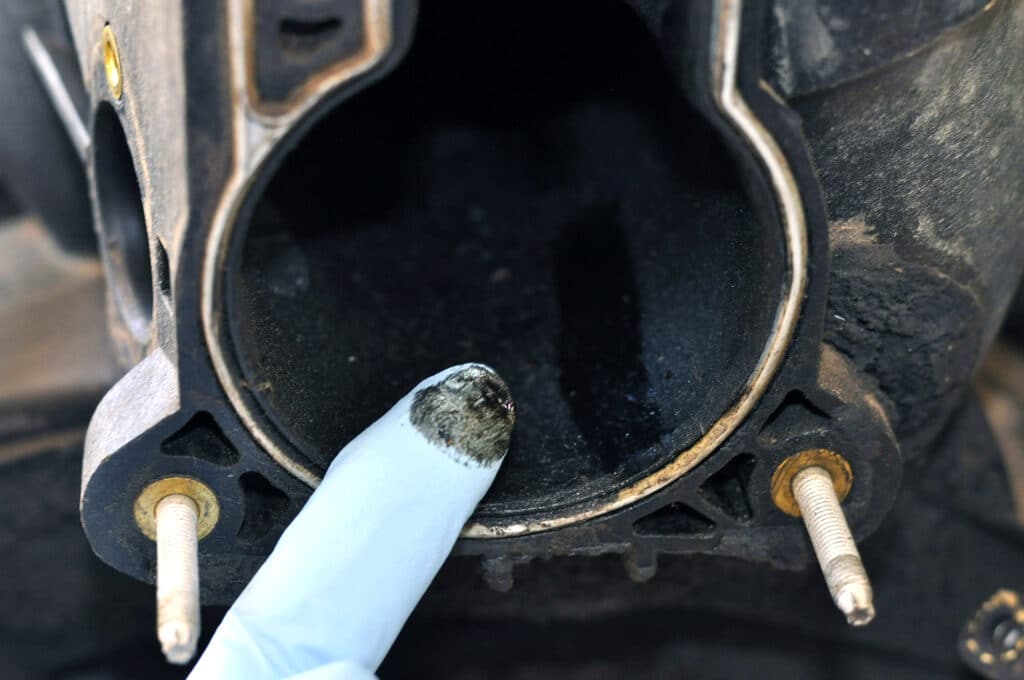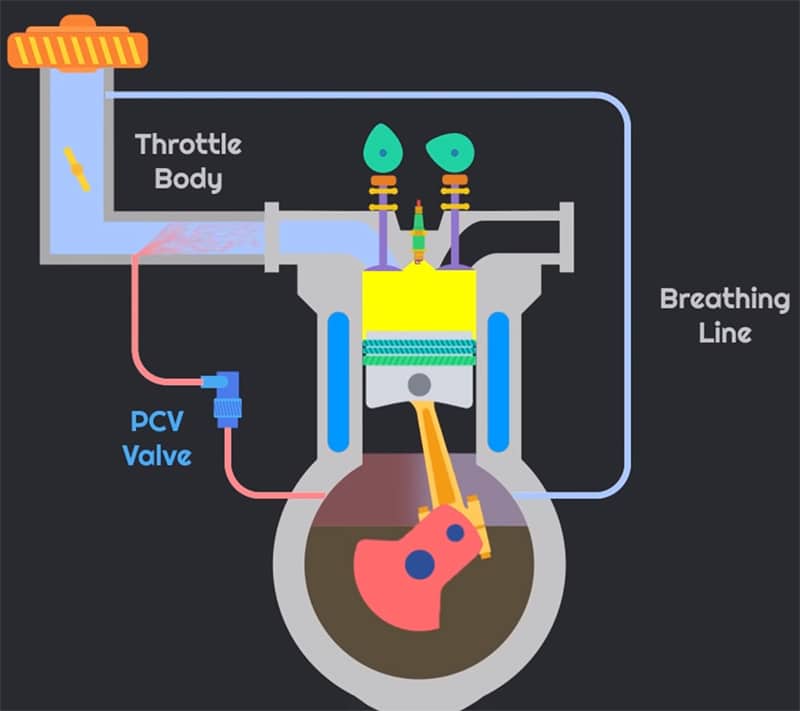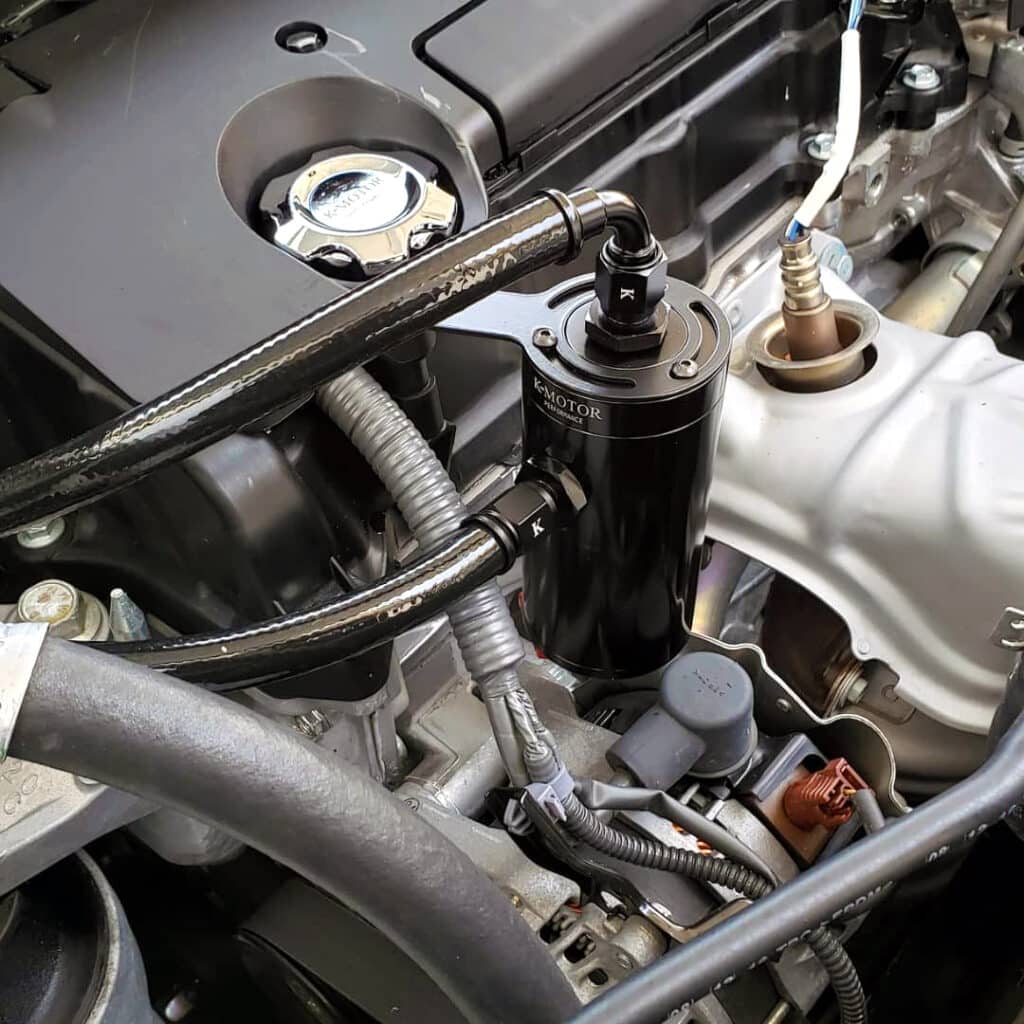If you own a performance car there’s a good chance you’ve noticed a drop in your engine oil level from time to time. Have you ever wondered where this oil is going or what’s happening?
Your engine is likely burning it up, which can slowly eat into your maintenance budget and can even damage your motor. That’s where the oil separators come in.
But what does an air oil separator do and how does it work? That’s what we’ll discuss in this article, and we’ll give you some insight into whether or not your car will benefit from installing one.
What Does an AOS Do?
When you think of your car’s combustion chamber you probably don’t think about oil. However, some performance engines are notorious for letting oil slip into the air stream and find its way into the combustion chamber.
Cars with this problem need an air oil separator (AOS) to help protect the engine and keep everything in optimal condition.
But what exactly does an AOS do? The short answer is that it filters out the excess oil that slips into the inlet stream.
This is necessary because oil and oil-vapor mixing into the intake tract will lower your fuel’s octane rating and make your engine prone to detonation, engine knock, and carbon build-up.

Problems like these are often remedied by using fuel octane boosters, but that’s more like a bandaid solution, when in fact fixing the root cause might be as easy as installing an AOS or an oil catch can.
Additionally, the AOS will also clean the oil and reintroduce it to the engine. This significantly reduces the amount of maintenance required.
How Does an Air Oil Separator Work?
While it might seem like a complicated device, the way an AOS works is very simple.
Just like a catch can, it separates and traps oil from the blow-by gas before it is rerouted into the intake tract by the positive crankcase ventilation (PCV) system.

The AOS intercepts the PCV system by trapping the blow-by gases into a canister with multiple inlets and outlets.
It’s designed in a way that allows air to pass through and exit the separator without a problem, but the oil has to go through a filter, separating the two as a result.
The air is then rerouted back into the intake tract, and the oil is returned to the crankcase.
When You Need One?
There are a few different performance engines that benefit from an air oil separator, but perhaps no car needs one more than the Subaru WRX.
That’s because the WRX has a side-mounted engine and the extreme force these engines produce naturally draws oil to the end of the combustion chamber.
This excess oil causes detonation, which harms your engine over time. The longer you let it go on, the more frequent detonations will occur. This problem is common among direct injection engines.

The WRX has this problem even with the stock setup, it just gets worse with each engine, intake, or exhaust modification you make.
But while the Boxer platform is the most notorious engine setup that could benefit from an AOS, it’s not the only one.
This is especially true if you’re putting a lot of aftermarket parts on your car as they can naturally force some oil into the combustion chamber and cause problems.
While we’d love to recommend a specific air oil separator for your car, the best one for you all comes down to what you drive.
The good news is that there are tons of top-notch air oil separators out there, especially if you drive a Subaru.
Installation Process
While the exact process of installing an AOS can vary depending on the car, the following steps are a general guide to installing it onto your car.
Of course, if you still can’t figure it out there’s nothing wrong with taking your car to a certified mechanic to have them install it for you.
- Locate the PCV hoses
- Install the AOS bracket
- Disconnect the PCV hoses
- Remove the oil catch cans (if applicable)
- Connect the air oil separator hoses to the PCV hoses
- Connect the drain hose
- Install the air oil separator
- Reconnect all hoses
Air Oil Separator vs Catch Can
While both oil separators and catch cans separate oil from the air from your engine’s blow-by, the difference lies in what happens to the oil after the device separates it. Both devices will recirculate the separated air into the intake tract.
But what makes AOS systems superior and relatively maintenance-free is that they return the oil to the engine crankcase.

Air oil separators have more baffling and more efficient filtration systems in comparison to catch cans. But despite them being touted as a set-and-forget type of system, they still need to be looked at every once in a while.
In contrast, catch cans need to be monitored quite regularly, because, unlike AOS systems, you need to manually (and responsibly) dump the oil trapped by the catch can. Failure to do so can wreak all kinds of havoc with your engine.
Final Thoughts

We recommend installing an AOS to save yourself some cash and protect your engine. It might not seem like a big deal, but the added duration to your engine’s lifespan will make it more than worth the initial investment.
Do you have a question about air oil separators? Let us know by leaving a comment below!
If you enjoyed reading this post, don’t forget to share it with your friends. We appreciate your support!

